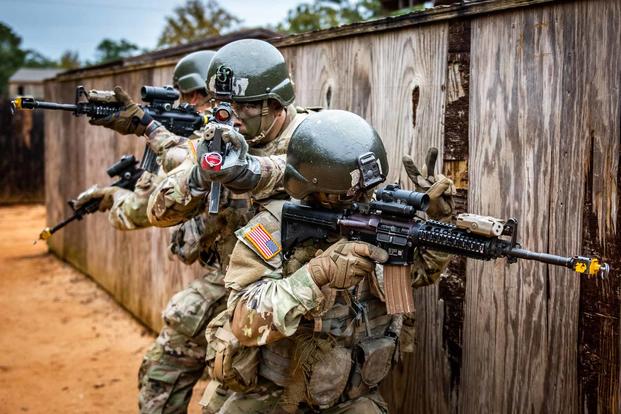Roughly 1 in 4 young adults are too overweight to qualify to serve in the military. But even a lot of the ones who make it through the recruiting process suffer injuries in basic training, some of which can be attributed to the sudden ratcheting up of physical activity.
Treating injuries in basic training and the follow-on advanced individual training, or AIT, where soldiers train for their specific job, can be expensive. Removing a soldier from the force before they arrive to their first unit costs the Army roughly $85,000, according to service data.
"We're seeing a decrease in fitness of those coming into the military," Col. Chris Meyering, the top medical officer for the Army's Training and Doctrine Command, or TRADOC, told Military.com. "You have kids that are involved in sports and are very active and you have those that don't do much at all, and we're bringing both in and having the same expectation of training them up to be soldiers in a relatively short amount of time."
Read Next: New Navy Climate Plan Is Mostly Silent on Its Biggest Polluters: Ships and Planes
Even injuries during those first few months of training that aren't serious enough to force soldiers from service mean sacrificing hours of time for both them and their drill sergeants, which can upend tightly scheduled training.
About a year ago, TRADOC started rolling out a new program that has medics and behavioral health specialists fully integrated into basic training units. And early data suggests more soldiers are able to complete their initial training and that hours of injury time are saved.
After the integration of the program, TRADOC Organic Medical Structure, or TOMS, there were 1,700 fewer soldiers removed from initial training last year compared to 2020, out of the roughly 100,000 new recruits each year. While it's unclear how much of an impact TOMS had, that's a sizable drop.
The new program has medics at each formation at the beginning of the duty day for basic trainees, often around 5 a.m., before they begin training, according to Meyering. There, small injuries such as blisters and minor sprains can be addressed, and over the counter-style medication for issues such as allergies can be handed out.
Previously, new soldiers would have to go to a clinic on base, which often takes them out of training for half the day or longer. And they were often required to be accompanied by a fellow soldier from their formation, taking two soldiers away from training. It also wasn't uncommon for a drill sergeant to be needed to transport the soldier, leaving a leadership vacuum behind.
Catching small issues early, and treating them on the spot, saves hours of time and doesn't put the soldier at risk of missing critical events such as must-pass ruck marches, land navigation and marksmanship training, Meyering said. The Army's 10-week basic training course is fast-paced, with new soldier tasks taught almost daily. Missing a day could put the soldier behind when they show up to their first duty assignment.
Army basic training has gone through a series of changes in recent years -- most notably in 2020, when it removed the so-called "shark attack" in which drill sergeants would ambush, scream at and purposefully intimidate new trainees upon their arrival. Instead, combat arms schools such as infantry and the cavalry scout schools now task new soldiers to accomplish a series of team-driven tasks while having their physical fitness put to the test.
The idea is to have soldiers trust their noncommissioned officers, instead of their first interaction being antagonistic. However, those first few hours at basic training are still built to be stressful.
The drill sergeants themselves also have access to the embedded medical units as part of the new policy, including behavioral health resources.
"When we looked at suicides across our formations, where we've had more suicides is in our cadre and our drill sergeants, as opposed to the trainees. The job is very demanding for what they do," Meyering added.
Editor's note: This story has been updated to correct the name and timing of a new Army program, as well as the number of new recruits each year.
-- Steve Beynon can be reached at Steve.Beynon@military.com. Follow him on Twitter @StevenBeynon.
Related: The Army Keeps Boosting Recruiting Bonuses as It Struggles to Find New Soldiers












